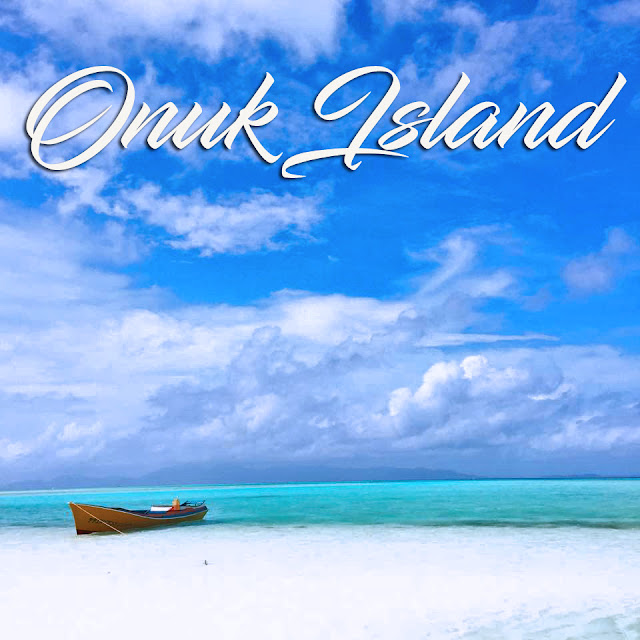Revisiting memories significant to the Filipinos at the historic & continuously developing city of San Juan
Thursday, May 09, 2019
I love being part of historical tours in the metro, it makes me understand and know more how a once rural area became a developed and urbanized city. One example is San Juan City, I never thought I would look at San Juan now like I did in the past. After touring some of the key places, I can now totally say that the city has been governed wisely by the recent administration that they had specifically with former Mayor JV Ejercito who is now running for senator then to her wonderful mother who is the incumbent mayor of San Juan no less than Guia Gomez.
Our first stop was the Government Center of San Juan
San Juan City is in the heart of Metro Manila, the once wooded area surrounded by rice fields has evolved into a populated and progressive city. "San Juan City" is a contraction of the city's traditional name of "San Juan del Monte". As with numerous other places in the Philippines, the name combines a patron saint and in this case Saint John the Baptist with the locale's hilly terrain and relatively higher elevation compared to surrounding areas.
The government center of San Juan is a four-story building complete with a helipad
on the top floor.
The building houses the new city hall, sitting on one hectare adjacent to the historical Pinaglabanan Shrine and a stone’s throw away from the city police headquarters and the fire station. You can also see the 5,000-square-meter parking lot far more spacious compare to the older city hall.
The Pinaglabanan Shrine, which is located at San Juan, commemorates the first battle of the Filipino revolutionary group Katipunan in 1896 against the Spanish colonizers.
The new city hall also houses this innovative system that can check what goes on around the city for monitoring purposes.
The offices of the respective councilors in San Juan
The media also got the chance to meet Mayor Guia Gomez who shared with us some historical facts about San Juan City and how it has evolved over the years with the help of now JV Ejercito who is a former Mayor of the City. The city's GDP doubled when Senator JV became mayor and even increased when Mayor Guia succeeded the mayoral term. One of the most notable projects of Senator JV is the housing project.It all boils down to clean and 100% public service to the people.
It was indeed a wonderful experience to meet Mayor Guia because she is such a nice, hospitable and sincere woman and I know that she raised her children well just by looking at what Senator JV has become.
Our second stop is the MUSEO EL DEPOSITO
Located at the Pinaglabanan Shrine grounds, Museo El Deposito lets you in on the history of the 1882 Carriedo Waterworks, which provided potable water to Manila during the 19th century. The museum features original artifacts, which attest to the long history of El Deposito, including an original Carriedo waterworks hydrant.
El Deposito was not just a water reservoir. It was also used as an armory during the Japanese and American occupations, a hospital for tuberculosis patients and a firing range. Filipinos who fought in the Filipino-American War took over El Deposito, well aware of its importance not only to the Filipinos but also to the American soldiers. It was even declared a national shrine in honor of the Filipinos who fought during the Battle of San Juan del Monte.
Third stop is the MUSEO NG KATIPUNAN
The Museo ng Katipunan provides an educational approach to understand the Katipunan, its primary movers, and their actions. Apart from Andres Bonifacio, Emilio Jacinto, and other renowned revolutionaries, the Museum honors the valiant efforts of the Katipuneros who fought for the independence of the Philippines through a Memorial Wall.
Lined with innovative and conventional exhibits, the Museo ng Katipunan tells the story of the clandestine organization of the Filipino revolutionaries. Archival documents, amulets, cryptic messages, and bladed weapons used by Katipuneros are seen throughout the Museum. Various artworks—busts, monochrome pastel portraits, and oil paintings depicting scenes from the revolution—created by renowned Filipino artists are also displayed. Among the interactive features of the Museum is a holographic image of Andres Bonifacio and an audio recording of the poem Pag-ibig sa Tinubuang Lupa. The entwined lives of Bonifacio and Emilio Jacinto are highlighted by different exhibits like the interactive map tracing their beginnings in Tondo, Manila, the Kartilya, and the Katipunan Decalogue. In addition, the Museum houses a stereoscopy room featuring late 19th century photographs, a library, and an e-learning room.
Fourth stop is the Santuario del Santo Cristo
Also known as the Church of San Juan del Monte is a church and convento in San Juan, Metro Manila, Philippines. The shrine was built in 1602-1604 by the Dominicans on land that was donated to the order. Both the church and convento were burnt and destroyed during the Chinese insurrection of 1639, and later rebuilt in 1641. It was again destroyed in July 1763 as Britain briefly occupied Manila during the Seven Years' War. The current church and convento were built in 1774, and used as a shelter by Katipuneros during the 1898 Philippine Revolution against the Spanish Empire. It has since been renovated many times until the 1990s.
The shrine is the seat of the Cofradia del Santísimo Cristo de San Juan del Monte ("Confraternity of the Holy Christ of Saint John of the Mountain"), which received papal approval on March 4, 1648.
The historical facade of Church of San Juan del Monte
The Santuario del Santo Cristo is a witness to the many changes that has happened in the city of San Juan for centuries and, hopefully, to bear witness to the changes yet to come.
You can also check out the vlog of our historical tour plus some of the famous landmarks that we also passed by along the way.
So, why should you visit SAN JUAN CITY?
1. The historical places, vintage houses, monuments and museums
2. The old church and how it survived through the years
3. Malls and great food choice plus hole in the wall restaurants
4. Classic yet competitive government center
5. Hardworking, competent and honest public servant spearheaded by Mayor Guia Gomez
Indeed, it is wonderful experience and quite a memorable one to learn more about the historical background and the developments of San Juan through the years. It feels gratifying to know that there are still those public servants who genuinely care for their people and the how the rich history of the city should be enriched and protected just like in San Juan. Thank you Mayor Guia Gomez for the amazing experience, I hope the legacy that you and Senator JV Ejercito leaves on at San Juan City.






























.jpg)





.jpg)







0 comments